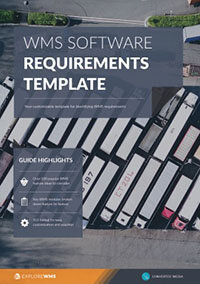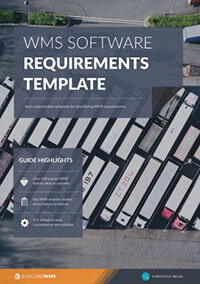Six shipping features to look for in your next WMS
Shipping is only one of the core functions every warehouse management system must support, but it’s often the biggest place you can save money or burn it.
In many cases, you’re looking at unusual requirements or the ability to take advantage of existing savings, but you need a system smart enough to identify those opportunities for you.
Here are six elements that you might want to consider if you are facing tough regulators and customers or think there’s a way to save big lurking in your data.
1. Managing customer needs and requirements
A smart WMS makes it easier to deal with your customers and meet their needs. In the shipping realm, this can mean matching your efforts to customer requirements such as routing guides or reporting checklists.
If your customers are particular, look for a WMS that can build customer-specific shipping instructions and documents to supplement your existing audit paperwork.
This type of feature set is perhaps most important if you have customers, like retailers, who charge you based on non-compliance. Seek out a robust reporting shipping tool that allows you to meet their tracking and audit needs while also allowing you to record and take corrective actions when an issue occurs.
2. Load consolidation
When a WMS supports load consolidation, you’ll be able to reduce shipping costs in your trucks as well as the orders you ship. An integrated system allows you to combine open orders for single ship-to within specific timeframes and locations so that you’re renting out a full truckload of space and securing a lower cost per package from your carriers.
Map out and prioritize your shipping requirements with this WMS requirements template
You might also be able to secure systems that support load consolidation with break-bulk processing so that you can move substantial portions of inventory to different warehouses or satellite locations. You can move what you need and processes it where it makes the most sense for your business.,
Some advanced systems also provide 3D trailer loading support for maximizing space in your rigs.
3. Continuous cost tracking
A chief best practice for today’s WMS is a function that makes it easy to select the best carrier for your load based on a variety of factors that cause differences in cost and delivery speed. We recommend you look for a WMS that not only lets you sort and adjust based on factors like weight, volume (or DIM weight), and zone destinations but also one that updates cost estimates regularly and continuously tracks costs.
That unceasing review may help you identify new opportunities or cost savings based on carrier preferences and volumes.
4. Cross-docking
Cross-docking allows you to place goods as ready to be used in orders immediately, so you don’t have to move any to storage shelves or warehouse inventory locations. The ability to turn incoming goods into outgoing goods can save you time and reduce costs when you’re running low on stock or have orders coinciding with resupplies.
Ship your goods to their final destination faster and more reliably when you automate this process in your WMS.
5. Smart labels and creation
How much information do you need about the goods you receive from manufacturers? Is this the same data that your customers need?
In many cases, there are differences in the data that you want to keep and what you want to pass on to your customers. Smart labels and barcodes will help you increase your shipping accuracy by pairing goods back to manufacturer information.
A WMS that can create new barcodes will enable you to break down loads and distribute them into smaller sections or give customers a smaller piece of information that’s separate in your system. So, you can call up the customer data separate if you need to meet operational, regulatory, or other compliance requirements.
6. Centralized dashboards
The best way for leadership to take advantage of a WMS and your shipping operations is to have it presented in a way that’s easy to understand. Centralized dashboards can show you a complete picture of shipping and management.
Business intelligence is only useful when it is intelligible. Look for a WMS that presents your data in clear, concise ways. Give yourself a guarantee of this success by having leadership be present during the selection process.
Free white paper

WMS requirements template
Over 120 WMS feature ideas to help you build a requirements list and shortlist vendors

Featured white papers
-

WMS requirements template
Over 120 WMS feature ideas to help you build a requirements list and shortlist vendors
Download
Related articles
-

Your complete WMS features and requirements guide
How to gather requirements for a new WMS, and features to look for to meet them
-

Mission-critical features of food lot traceability software
What features of food traceability software will help you during a food recall
-

Here's your complete WMS modules and features checklist
All the features and modules you might need in your WMS - perfect for requirements gathering

